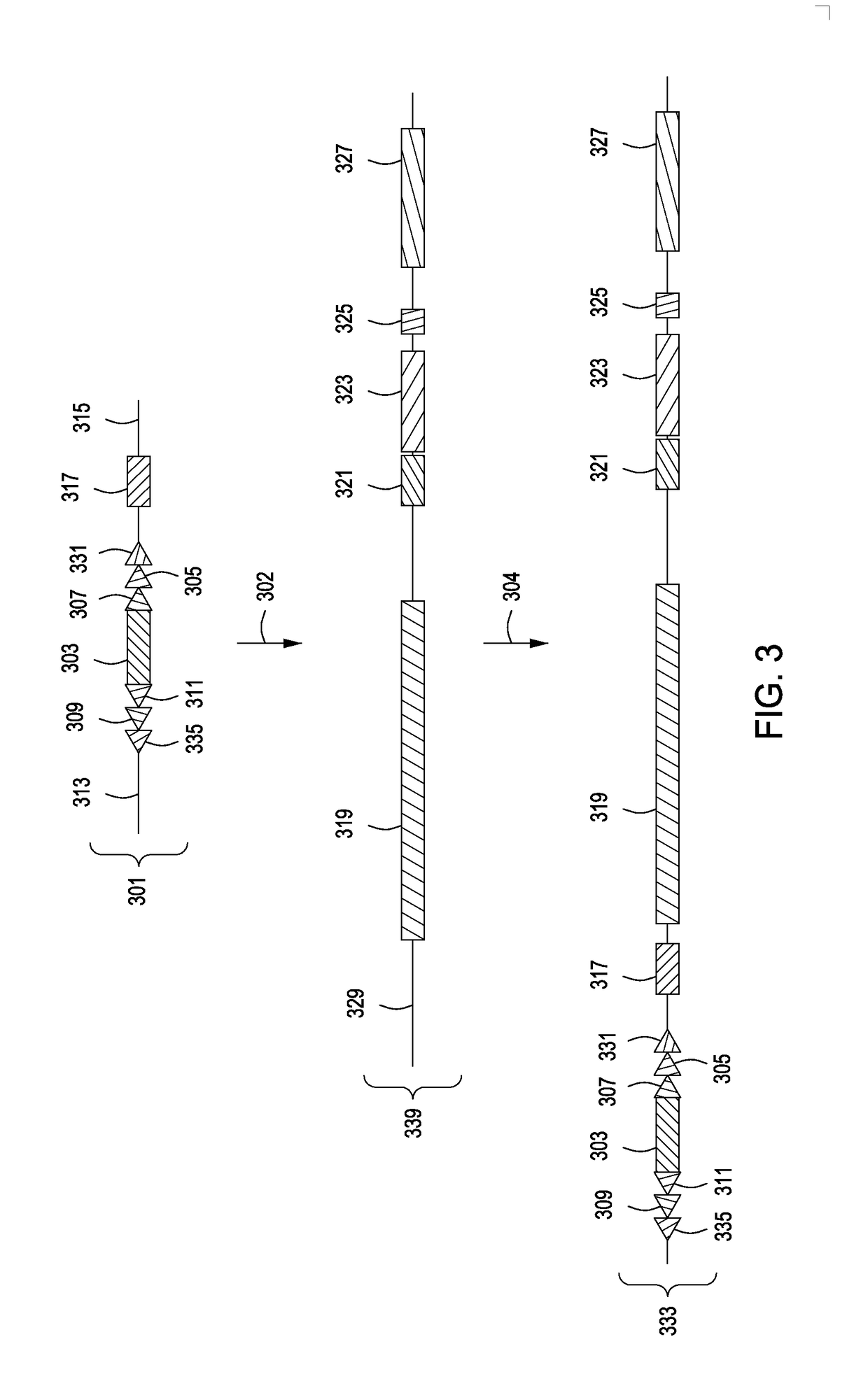Transgenic mammals and methods of use thereof
a technology of transgenic mammals and methods, applied in the field of transgenic mammals, can solve the problems of high cost and time-consuming creation
- Summary
- Abstract
- Description
- Claims
- Application Information
AI Technical Summary
Benefits of technology
Problems solved by technology
Method used
Image
Examples
example 1
Introduction of an Engineered Partly Canine Immunoglobulin Variable Region Gene Locus into the Immunoglobulin H Chain Variable Region Gene Locus of a Non-Canine Mammalian Host Cell Genome
[0094]An exemplary method illustrating the introduction of an engineered partly canine immunoglobulin locus into the genomic locus of a non-mammalian ES cell is illustrated in more detail in FIGS. 2-6. In FIG. 2, a homology targeting vector (201) is provided comprising a puromycin phosphotransferase-thymidine kinase fusion protein (puro-TK) (203) flanked by two different recombinase recognition sites (e.g., FRT (207) and loxP (205) for Flp and Cre, respectively) and two different mutant sites (e.g., modified mutant FRT (209) and mutant loxP (211)) that lack the ability to recombine with their respective wild-type counterparts / sites (i.e., wild-type FRT (207) and wild-type loxP (205)). The targeting vector comprises a diphtheria toxin receptor (DTR) cDNA (217) for use in negative selection of cells c...
example 2
Introduction of an Engineered Partly Canine Immunoglobulin Variable Region Gene Locus Comprising Additional Non-Coding Regulatory or Scaffold Sequences into the Immunoglobulin H Chain Variable Region Gene Locus of a Non-Canine Mammalian Host Cell Genome
[0102]In certain aspects, the partly canine immunoglobulin locus comprises the elements as described in Example 1, but with additional non-coding regulatory or scaffold sequences e.g., sequences strategically added to introduce additional regulatory sequences, to ensure the desired spacing within the introduced immunoglobulin locus, to ensure that certain coding sequences are in adequate juxtaposition with other sequences adjacent to the replaced immunoglobulin locus, and the like. FIG. 7 illustrates the introduction of a second exemplary engineered partly canine sequence to the modified non-canine genome as produced in FIGS. 2-5 and described in Example 1 above.
[0103]FIG. 7 illustrates introduction of the engineered partly canine seq...
example 3
Introduction of an Engineered Partly Canine Immunoglobulin Locus into the Immunoglobulin Heavy Chain Gene Locus of a Mouse Genome
[0105]A method for replacing a portion of a mouse genome with an engineered partly canine immunoglobulin locus is illustrated in FIG. 8. This method uses introduction of a first site-specific recombinase recognition sequence into the mouse genome followed by the introduction of a second site-specific recombinase recognition sequence into the mouse genome. The two sites flank the entire clusters of endogenous mouse VH, DH and JH region gene segments. The flanked region is deleted using the relevant site-specific recombinase, as described herein.
[0106]The targeting vectors (803, 805) employed for introducing the site-specific recombinase sequences on either side of the VH (815), DH (817) and JH (819) gene segment clusters and upstream of the constant region genes (821) in the wild-type mouse immunoglobulin locus (801) include an additional site-specific reco...
PUM
| Property | Measurement | Unit |
|---|---|---|
| nucleic acid sequences | aaaaa | aaaaa |
| length | aaaaa | aaaaa |
| structure | aaaaa | aaaaa |
Abstract
Description
Claims
Application Information
 Login to View More
Login to View More - R&D
- Intellectual Property
- Life Sciences
- Materials
- Tech Scout
- Unparalleled Data Quality
- Higher Quality Content
- 60% Fewer Hallucinations
Browse by: Latest US Patents, China's latest patents, Technical Efficacy Thesaurus, Application Domain, Technology Topic, Popular Technical Reports.
© 2025 PatSnap. All rights reserved.Legal|Privacy policy|Modern Slavery Act Transparency Statement|Sitemap|About US| Contact US: help@patsnap.com



